
robert st-coeur/iStock/Getty Images
The Inuit people originally lived along the northern Alaska coast, eventually migrating to other areas around the North Pole, including Canada, Siberia and Greenland. Although most contemporary Inuit people live indoors and wear store-bought clothing, garments made of watertight skins and furs enabled early Inuit people to survive in the bitter cold climate. Construction of traditional Inuit clothing required highly developed skills passed down from generation to generation. Garments were often decorated with shells, stones, ivory, beads or small animal bones.
Warm Anoraks and Pants
The Inuit people relied on anoraks -- knee-length outer garments much like parkas -- to keep them warm. Although anoraks and pants were sometimes made from the skin of polar bears, fox or wolves, they were usually constructed of caribou skin because the short, hollow hairs of the animal made warm, lightweight garments. The thickness of a caribou pelt depends on the season, which allowed the Inuit people to make anoraks suitable for every time of year. Women's anoraks had apron-like flaps in front and back, as well as a baby pouch called an amaut, which kept an infant next to his mother's skin. The roomy shoulders of men's anoraks allowed freedom of motion for hunting. Garments made of waterproof sealskin were often worn during warmer weather.
Double Layers for Warmth
Often Inuits dressed in layers. One garment, with the fur facing the skin, was covered by an anorak with the fur facing outward. Although the women usually wore pants made of only one layer, men's pants consisted of two layers to keep them warm on long hunting expeditions. Pants and anoraks with single layers were sufficient during warmer weather.
Inuit Headwear
Anorak hoods were finished with wolf or wolverine fur, which protected the wearer's face from snow and ice. During the summer, Inuit people often wore waterproof hats made from sealskin. For special events, Inuits decorated their headwear with beads, animal teeth and claws or other items such as ermine skin or loon skin with the bird's beak intact.
Warm Hands and Feet
Inuit people wore fur or sealskin mittens with thumbholes, trimmed in caribou belly fur. Footwear could be up to five layers depending on the season. Basic footwear consisted of a thin animal skin liner worn much like a stocking, a fur boot and a waterproof outer covering. Waterproof sealskin boots were worn throughout the year. A layer of dried moss and grass placed in the sole of the footwear helped absorb perspiration.
Children's Clothing
Children wore single piece garments that kept the youngsters' backs and bellies covered. The pants of the garments were split in the crotch area so the child could take care of bathroom needs without baring his skin. The hoods of children's garments were often constructed from the back part of a caribou head, often with the ears left intact.
Related Articles
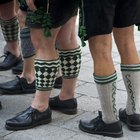
What Kind of Clothing Do People Wear in ...

The Difference Between Snow Boots & ...

Men's Fashion of the 1930s
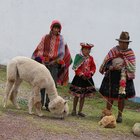
What Kind of Clothing Do Peruvians Wear?

How to Cook Pork Skins
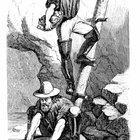
Clothing of the Gold Miners in the 1850s

Types of Clothing Worn in Alaska

What Are Pac Boots?
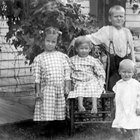
Children's Clothes in 1915

Irish Clothes of 1850

Definition of Packer Boots

What Did Men Wear in the '50s?
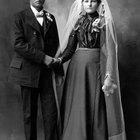
Farmer's Wife's Clothes in the 1800s

Traditional Clothing in Hawaiian Culture

About Apache Indian Clothing

Children's Clothes in the 1600s
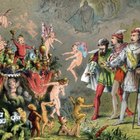
What Did Men Wear During the ...

Women's Clothes in 1943
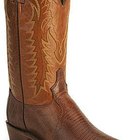
How to Clean Lizard Skin Boots
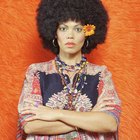
Clothes Worn in the Seventies
References
Writer Bio
M.H. Dyer began her writing career as a staff writer at a community newspaper and is now a full-time commercial writer. She writes about a variety of topics, with a focus on sustainable, pesticide- and herbicide-free gardening. She is an Oregon State University Master Gardener and Master Naturalist and holds a Master of Fine Arts in creative nonfiction writing.
Photo Credits
robert st-coeur/iStock/Getty Images